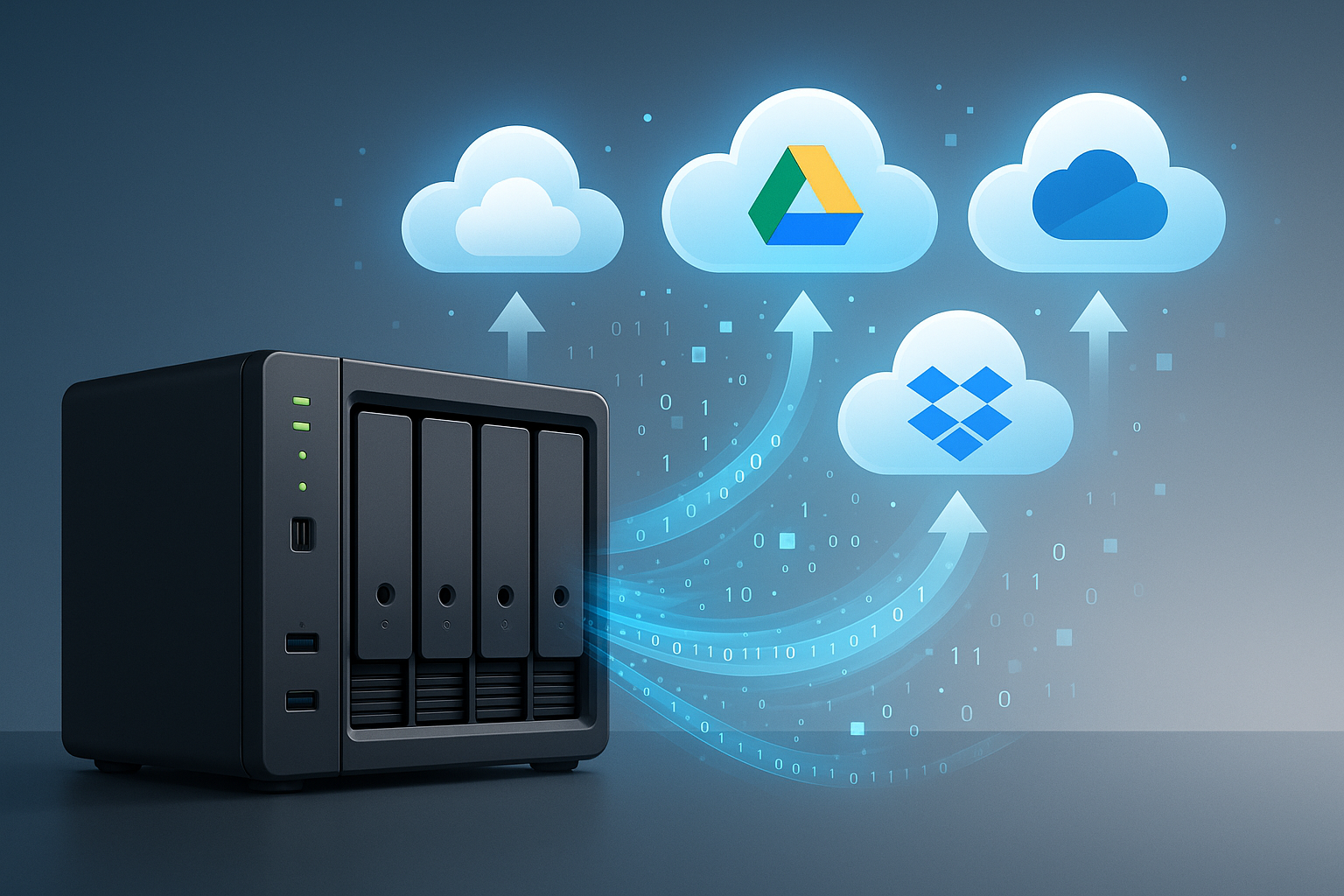In today's connected world, Network Attached Storage (NAS) has become the backbone of home and business file sharing, backups, and media streaming. Samba NAS remains one of the most reliable and widely used methods for sharing files across a network. Powered by the SMB protocol, Samba enables seamless access to files from Windows, macOS, Linux, iOS, and Android, making it a must-have for both home users and businesses.
In this guide, you'll learn:
- What Samba is and why it matters for NAS
- How to set up Samba NAS on LincOS for optimal performance
- Integration with smart home platforms like Home Assistant
- Security best practices
- How LincOS (LincStation N2 & N1) takes Samba NAS to the next level
1. What is Samba NAS?
Samba is an open-source implementation of the SMB (Server Message Block) protocol, originally designed for Windows file sharing. Today, it allows cross-platform file access, so you can store files on a NAS and open them from any device as if they were on your local drive.
Why Samba is Popular for NAS:
- Works across Windows, MacOS, Andriod, IOS and Linux without extra software.
- Easy to set up and integrate with home and office networks.
- Supports advanced features like file versioning, permissions, and encryption.
- Ideal for media servers, backups, and collaborative workspaces.
2. Why Choose Samba NAS Over Other Methods?
While there are other ways to share files (FTP, cloud sync, WebDAV), Samba offers unique advantages:
- Local speed: Access files at LAN speeds, especially over Gigabit or multi-Gigabit Ethernet.
- User-friendly access: Appears as a regular folder in File Explorer (Windows) or Finder (macOS).
- No subscription fees: One-time NAS investment; no monthly costs like cloud storage.
- Full control over data: Files remain on your NAS, not on third-party servers.
3. Setting Up Samba NAS on LincOS
Access via Windows PC
- Open 'My Computer'.
- Enter smb://<Device_IP>in the address bar or find the computer 'LincStation in 'Network.
- Press Enter, then enter your LincStation account and password to access the shared folder.
- To map as a network drive:
- Right-click on an empty area in 'My Computer' and select 'Map network drive'
- Enter the shared path (e.g.,\<Device_IP>\<Share Path>)in the prompt.
- Follow the instructions to complete the process.
Access via macOS
- Open Finder.
- Click 'Go > Connect to Server' from the top menu.
- Enter smb://<Device_IP>in the pop-up window.
- Click 'Connect', then enter your LincStation account and password.
- Once connected, the shared folder will appear in Finder's sidebar.
Access via Linux
- Open a terminal.
- Ensure you have permission, then mount the shared folder using:
mount -t cifs o username=<your_account
Example:
mount -t cifs -o username=admin,password - once mounted, you can access the shared folder via/ mnt /share
Access via Other Devices
- Open an SMB-compatible client (e.g., a mobile
file manager). - Enterthe server address:smb://<Device_IP>
- Enter your LincStation account and password to access the shared folder.
- lf a port number is required, use 445 (Samba's default port).
Notes
1. Ensure the device and client are on the same LAN.
2. lf the connection fails, check if the device's Samba service is enabled.
3. Ensure the firewall is not blocking access to port 445.
4. lf all else fails, contact the administrator or refer to the device's help documentation.
4. Samba NAS Storage for Home Assistant
One of the most practical and popular uses for Samba NAS is with Home Assistant, the open-source home automation platform. By integrating a Samba share with Home Assistant, you gain easy, direct access to configuration files, automation scripts, and backups—without needing to connect via SSH or work inside a terminal.
Why Use Samba NAS with Home Assistant?
- Convenience: Access and edit Home Assistant files as if they were on your local computer.
- Efficiency: Avoid repetitive file transfers—just save changes directly to the NAS share.
- Centralized Storage: Store automation backups, add-ons, and media in one secure location.
- Cross-Platform: Works with Windows, macOS, and Linux desktops.
Typical Use Cases
-
Editing YAML Automation Scripts
You can open YAML configuration files in your preferred text editor (VS Code, Sublime Text, Notepad++, etc.) directly from the Samba share. No command-line access is required. -
Storing Backups Automatically
Configure Home Assistant to send periodic snapshots or backups directly to your NAS, ensuring your smart home setup can be restored easily. -
Hosting Media for Smart Home Devices
Store music, images, or video files on the Samba NAS and make them accessible to media players integrated with Home Assistant.
Setup:
- Install the Samba Share Add-on in Home Assistant.
- Set username, password, and workgroup.
- Access via SMB from your desktop or laptop.
5. Optimizing Samba NAS Performance
To make your nas with samba faster:
- Upgrade to multi-Gigabit Ethernet (2.5GbE or 10GbE) if your NAS and switch support it.
- Enable SMB Multichannel for multi-path data transfer.
- Use SSD caching for frequently accessed files.
- Disable SMB signing on trusted networks to reduce CPU usage.
- Organize shares logically to reduce search times.
6. LincOS Samba NAS Advantages
If you’re using a LincStation N2 or LincStation N11, the LincOS operating system provides Samba support that is:
- Cross-platform: Works with Windows, macOS, Linux, iOS, Android.
- Simple to configure: User-friendly UI with drag-and-drop sharing.
- Secure: Built-in SMB3 encryption.
- Smart integration: Works with LincOS Smart Album so you can store AI-organized photos on your Samba share.
- Flexible: Ideal for home offices, small businesses, and media centers.
7. Real-World Use Cases
Home Media Library
A Samba NAS can act as the central media hub in your household. Instead of keeping movies, TV shows, and music scattered across different devices, you can store them all in one shared SMB folder.
How it works:
- Store all media files in an SMB share called “Media” or “Entertainment.”
- Use a media server application like Plex, Kodi, or Emby to stream content.
- Access media from Smart TVs, gaming consoles, tablets, and phones without moving files around.
Benefits:
- No more duplicate files on different devices.
- Instant streaming to any device on the home network.
- Supports high-bitrate 4K playback over Gigabit or faster connections.
Family File Hub
Families often have thousands of photos, school projects, tax documents, and important records stored across different laptops and phones. A home NAS with Samba acts as a secure, private, and centralized “family cloud.”
How it works:
- Create user accounts for each family member.
- Assign personal SMB shares (e.g., \\NAS\John) for private storage.
- Create a shared family folder for group photos, recipes, or event planning.
Benefits:
- Automatic backup of important files from each device.
- Role-based access—kids can’t accidentally delete parents’ documents.
- Files remain private and stored locally—no third-party cloud exposure.
Small Business Server
For small businesses, a Samba NAS server is an affordable and secure alternative to expensive enterprise file servers. It allows controlled file sharing between employees while keeping sensitive data inside the office network.
How it works:
- Create department-specific SMB shares (e.g., \\NAS\Sales, \\NAS\HR, \\NAS\Design).
- Assign permissions so employees see only the folders they need.
- Use SMB for collaborative document editing, storing templates, and centralizing invoices.
Benefits:
- Controlled access with user authentication.
- Reduced IT costs compared to cloud enterprise solutions.
- Offline access—no internet required for internal file sharing.
Creative Studio
Photographers, video editors, and designers often deal with large files that can be slow to transfer via cloud services. A Samba NAS allows multiple workstations to collaborate in real time without waiting for uploads/downloads.
How it works:
- Store raw photos, project files, and final exports on the NAS.
- Connect editing machines (Windows or macOS) via SMB for direct file access.
- Use SSD caching or 10GbE networking for faster performance.
Benefits:
- Eliminates transfer delays—work directly from the NAS.
- Keeps all project versions in one place.
- Integrates with tools like Adobe Premiere Pro, Final Cut Pro, and DaVinci Resolve.
8. Conclusion: Why Samba NAS is Still the Best Choice in 2025
For home and business users, Samba NAS offers the perfect blend of speed, compatibility, and control. It’s easier to use than FTP, more private than cloud storage, and more universal than proprietary sync tools.
With LincOS on LincStation N2/N1, Samba becomes even more powerful, adding encryption, intuitive setup, and cross-platform access—all without sacrificing privacy.
If you want fast, secure, and private file sharing, Samba NAS is still the best option today.




Laisser un commentaire
Tous les commentaires sont modérés avant d'être publiés.
Ce site est protégé par hCaptcha, et la Politique de confidentialité et les Conditions de service de hCaptcha s’appliquent.